Pescatarians eat plants, dairy, eggs and fish
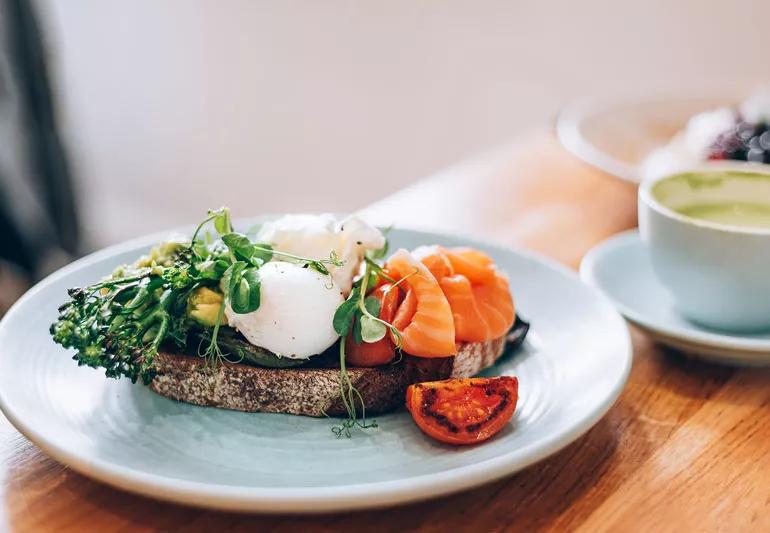
Interested in cutting meat out of your diet, but not fish? Or are you considering going vegetarian but want some protein options beyond plants?
Advertisement
Cleveland Clinic is a non-profit academic medical center. Advertising on our site helps support our mission. We do not endorse non-Cleveland Clinic products or services. Policy
Consider the pescatarian diet. This plan — more like a lifestyle — is vegetarian with one key difference: You also eat fish and seafood. Registered dietitian Anthony DiMarino, RD, explains what it means to be pescatarian — and how to maximize the health benefits.
There are no strict rules about how much of each food group you should eat on a pescatarian diet. Instead, you have the freedom and flexibility to choose which pescatarian-friendly foods you want to eat and how much, based on your preferences and health goals.
If you’re a pescatarian, you choose to eat:
Going pescatarian means you’re choosing to avoid eating any type of meat that isn’t seafood, including:
Eliminating meat and poultry from your diet and focusing on plants and seafood can be a healthy switch. Benefits of a pescatarian diet can include:
One of the main benefits of going pescatarian is replacing less healthy meats with heart-healthy fish. Most Americans don’t eat enough seafood, which contains high amounts of the omega-3 fats EPA and DHA.
Advertisement
“EPA and DHA are called essential fatty acids because your body cannot make them,” DiMarino says. “Seafood is one of the best sources of these fats, which improve heart and blood vessel health. Omega-3s have been linked to lower risks of high blood pressure, blood clots and sudden cardiac death.”
Fruits and veggies also contain antioxidants, special compounds that lower your risk of getting heart disease. Adding these foods to a diet that’s higher in fish provides a double dose of heart health benefits.
Another potential plus for your heart: Letting red meat go. Regularly eating red meat and pork increases your risk of heart disease. Red meat is also higher in calories and unhealthy fats than fish or plant-based foods.
“Eliminating red meat is a great way to boost your heart health,” says DiMarino. “Pescatarians can get all the nutrients they need without eating any beef, lamb or pork.”
Fruits and vegetables are nutritional powerhouses, but most of us don’t eat enough of them. Eating a colorful array of fruits and vegetables is an important part of an anti-cancer diet. These foods contain nutrients and phytochemicals that help fight the cell changes that can lead to cancer.
According to the American Society of Clinical Oncology, when you amp up your produce intake, you lower your risk of cancer in your:
But an apple (plus other produce) a day can chase more than cancer away. Studies also show that a high intake of fruits and vegetables lowers your risk of Type 2 diabetes. “Nearly everyone could benefit from adding more fruits and vegetables into their diet,” notes DiMarino. “These foods are the very best ones for fighting disease and living a healthier life overall.”
If your pescatarian plan includes lots of high-fiber foods, your gut is in for a treat. The fiber in plant foods helps prevent constipation and feeds your gut’s microbiome. Your microbiome is home to bacteria, fungi and yeast that live in your small and large intestines.
“Your microbiome plays a key role in your immune system, digestion and metabolism,” says DiMarino. “A healthy microbiome can also boost your mental health.”
Many foods in the pescatarian diet, like legumes, nuts and seeds, can help you curb those afternoon cravings. These foods are naturally high in fiber and protein, which take longer to digest than simple carbs like chips and processed snack foods. The end result: You may eat fewer calories throughout the day and feel less hungry.
Advertisement
Protein is a building block for your body’s tissues — every cell in your body needs it. And there’s some evidence to suggest that eating enough protein could help you lose weight. But getting your protein from meats high in saturated fat, like hamburger, comes with health risks (plus extra calories).
Pescatarian proteins are the healthiest ones. Fish and eggs are great sources of lean protein. And plant-based proteins, like soy, nuts and legumes, are healthy ways to get more of this important nutrient, too.
“We all need protein, but not all protein sources are healthy,” DiMarino states. “If you go pescatarian, you eat the healthiest protein sources available. Choosing these lean proteins over high-fat meat could help support weight loss.”
But it’s important to remember that going pescatarian doesn’t automatically mean you’ll cut calories, he adds. “You must be choosy about your food choices. Focus on whole foods to help you feel fuller, longer.”
The pescatarian diet leaves your food choices largely up to you. But simply avoiding meat doesn’t make for a healthy diet. To reap the benefits of a pescatarian lifestyle, avoid:
You can follow the pescatarian diet and still eat unhealthy foods. For example, potato chips and sugary cereals aren’t meat, so you can “technically” eat them on this plan.
Advertisement
“Any diet can be unhealthy if you eat too many processed foods,” cautions DiMarino. “Processed foods tend to be higher in calories, unhealthy fats and sugar. They’re also low in the vitamins and minerals your body needs.”
To make the most of the pescatarian plan, focus on whole foods like fruits, vegetables, nuts, seeds and whole grains. Eat processed foods sparingly — or not at all.
“You can avoid most processed foods by shopping the four walls of your grocery store,” encourages DiMarino. “Fill your cart with fresh produce, nuts and seeds, dairy, eggs and fish. Avoid the middle aisles, which typically contain foods like crackers, cookies and chips.”
For most people, the benefits of eating fish outweigh any risks. Most of the fish you eat should be the low-mercury types, which include:
But people who are pregnant or nursing should completely avoid high-mercury seafood. The highest-mercury types tend to be older, larger fish like:
“Most healthy adults should eat two servings of fish per week,” DiMarino recommends. “If you’re not pregnant or nursing, you can eat high-mercury fish on occasion. But focus on the low-mercury types for most of your fish intake.”
Advertisement
There aren’t any guidelines for how much fish, eggs and dairy to eat on a pescatarian diet. If you don’t eat these foods regularly, you could develop a deficiency in:
“Pescatarians, like vegetarians, need to be mindful of nutrients that aren’t readily available in many plant foods,” says DiMarino. “You can get enough zinc, protein and iron without eating a lot of eggs, dairy and fish, but it takes some planning.”
For example, many nuts, seeds and legumes are rich in zinc and protein. Fortified cereals and mushrooms contain vitamin B12. But you can’t always find a nutrition label on fresh foods, so it’s hard to know how much you’re getting.
If you plan to eat smaller amounts of dairy, eggs and fish on the pescatarian diet, play it safe and talk with a registered dietitian. Together, you can come up with a meal plan that covers your nutritional needs.
The pescatarian lifestyle and the Mediterranean diet share some similarities. Both plans focus on fruits, vegetables and whole grains. But on the Mediterranean diet, you:
“Following the Mediterranean diet is a proven way to lower your risk of heart disease,” DiMarino says. “But studies also show you can get similar results with the pescatarian diet. An important key with either diet is to choose whole foods over processed foods as much as possible.”
Following a pescatarian diet can improve your health — but it’s not for everyone. “Some people really enjoy lean chicken, or they don’t like fish,” notes DiMarino. “In these cases, going pescatarian probably isn’t a good idea. Consider the Mediterranean diet instead. The best diet for you is the most nutrient-filled one you can stick to long term.”
Learn more about our editorial process.
Advertisement

When it comes to getting proper nutrition, your assigned sex can play a role — but there’s more to it than that
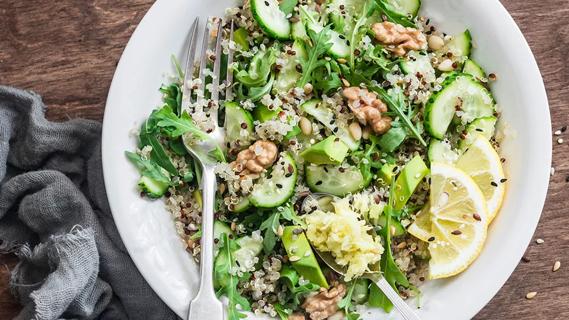
Ground flaxseed is full of heart-healthy omega-3s, antioxidants and fiber, and easy to add to just about any recipe
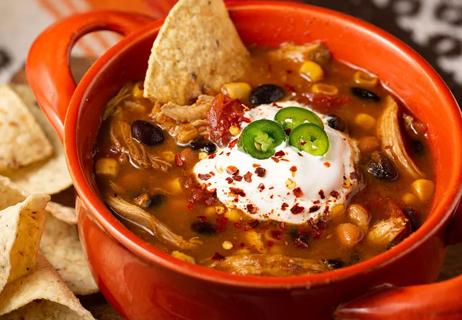
From meat to beans, we’ve got some ideas to help you create the perfect-for-you chili recipe
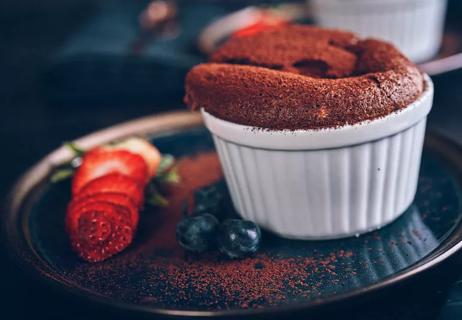
Only 130 calories per serving, this dessert deserves your attention

Plan ahead, bring a cooler when possible and don’t forget the water!
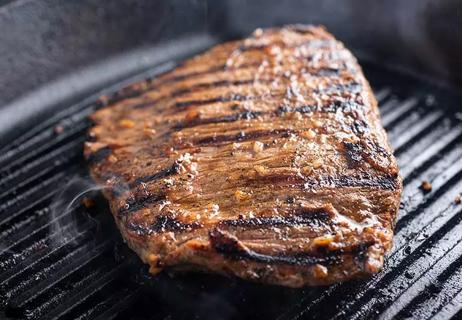
A delicious twist on grilling
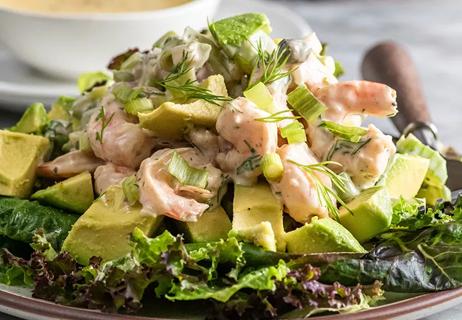
A cool, refreshing and satisfying salad!

Type 2 diabetes isn’t inevitable with these dietary changes

Applying a hot or cold compress can help with pain